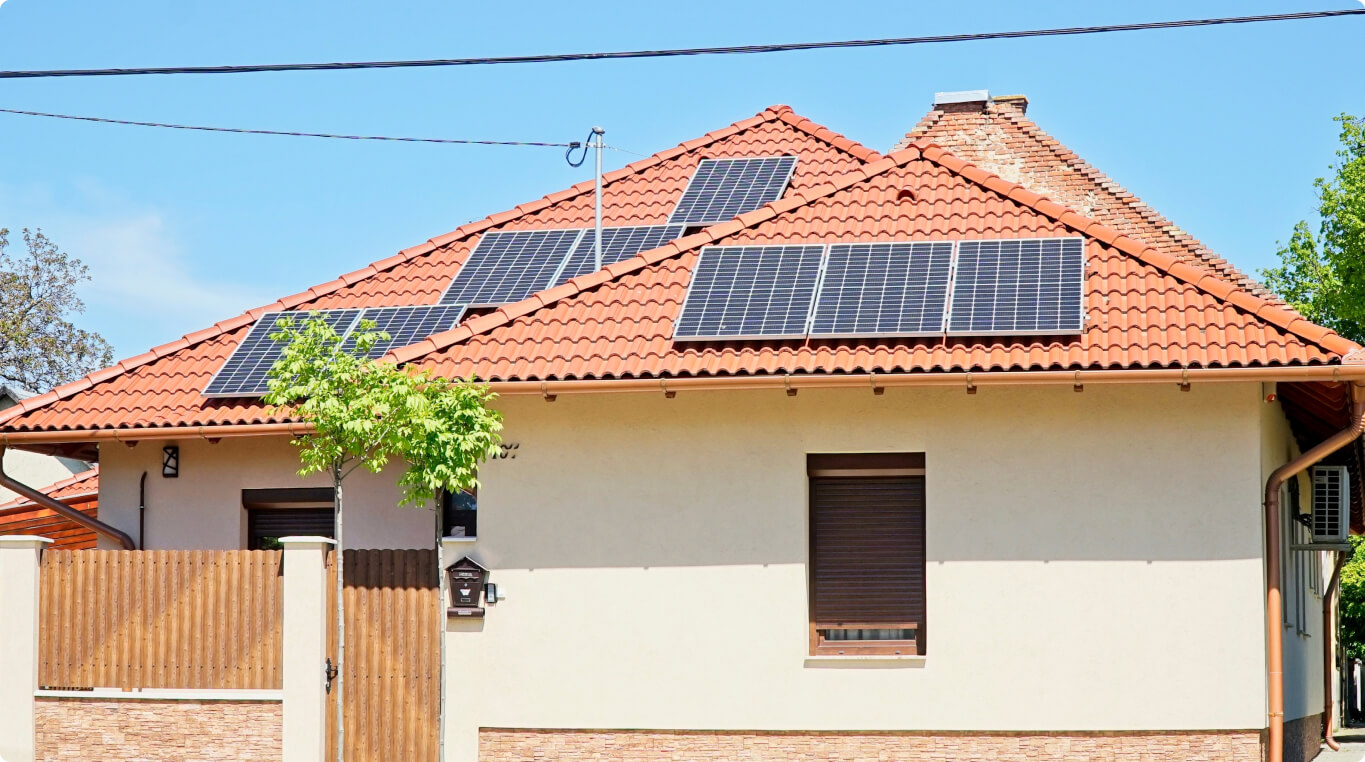
Blog


India is now emerging as a global leader in the renewable energy sector. In recent years, installing solar panels on roof in India has witnessed remarkable growth, revolutionizing the way energy is generated and consumed. This article explores the factors driving the expansion of India’s rooftop solar industry and highlights the transformative impact it is having on the country’s energy landscape.
Government (Govt.) initiatives and policy support were one of the key driving forces behind the growth of India’s rooftop solar industry. Initiatives like- 2nd phase of grid-connected rooftop solar program, offering 25-30% capital solar rooftop subsidy in Delhi and other states to Public segment, APEPDCL approving the DISCOM-driven solar roof installation program, using RESCO model to encourage solar adoption in the Corporate sector, offering financial assistance through SRISTI, Planning “rent a roof” policy is aiding in the progress of rooftop solar. Standing with 8.8 GW capacity, rooftop solar industry in India recorded nearly 1 GW capacity installation in last 6 months. Although, there is a shortfall from 40 GW target, Govt is working to increase rooftop adoption.
(Source: Industry research, MNRE)
With rooftop solar showing a potential of 210 GW, it is possible with favourable policy support to harness incredible growth in this sector. Green open access policy and rooftop subsidies were right step forward. Recent announcement of national solar rooftop portal will also simplify processes, speed up subsidy disbursal and encourage more people to go green. The C&I industry installing solar panels on roof will also play an important cog in the wheel for Rooftop solar to grow.
(Source: Crisil, Mercom, Ujjwal Bharat Ujjwal Bhavishya)
As an example, Govt.’s recent announcement of Modhera village in Gujarat as India’s first 24×7 solar powered village re-iterates Govt’s inclination towards investing and encouraging development of Smart cities and rooftop solar.
The Potential is High
It is important to note that India has 124 GW of market potential in the rooftop solar sector. Our current total energy generation 395 GW. Even if only 1.3% of India’s total households (total 248,408,494) are solarized with rooftop technology, more than 30% of that estimated energy capacity can be harnessed.
This is a great opportunity for India to boost its solar growth by focusing on rooftop solar.
Drop in deployment cost coupled with policy-driven initiatives between 2006 and 2018, the installed capacity of the Rooftop solar has grown from 2.5 gigawatts (GW) to 213 GW globally.
Indian rooftop solar industry has incredible potential to propel solar energy industry to great heights. With more focus on policy alignment, awareness, financial support, and policy implementation the Indian rooftop solar market is expected to record a CAGR of more than 15% over the forecast period 2022-2027.
(Source: Science Direct, Industry Research, Entrepreneur, Mint, M Intelligence)
Financial Incentives and Subsidies
To encourage installing solar panels on roof, the government provides attractive financial incentives and subsidies. These incentives include capital subsidies, accelerated depreciation benefits, and tax incentives for both residential and commercial consumers. Additionally, several statelevel initiatives offer net metering and feed-in tariffs, allowing consumers to sell excess solar power back to the grid, further enhancing the financial viability of rooftop solar installations.
Decreasing Costs and Technological Advancements
The declining costs of solar panels and technological advancements have played a crucial role in encouraging solar roof installation and rapid expansion of India’s rooftop solar industry. Over the past decade, the cost of solar panels has significantly decreased, making them more affordable and accessible to a broader segment of the population. Furthermore, advancements in solar panel efficiency and storage technologies have improved the overall performance and reliability of rooftop solar systems, making them an increasingly viable option for meeting energy needs.
Awareness and Consumer Demand
Growing awareness about climate change, environmental sustainability, and the benefits of renewable energy has fueled consumer demand for rooftop solar systems in India. Increasingly, both residential and commercial consumers are recognizing the economic and environmental advantages of generating their own electricity. Rooftop solar systems not only provide clean energy but also reduce electricity bills, offer longterm cost savings, and contribute to energy independence.
The Road Ahead
Despite the remarkable progress, India’s rooftop solar industry still faces some challenges in solar roof installation. These include issues related to grid integration, complex regulatory procedures, and the availability of suitable rooftop spaces. However, the government is actively working to address these challenges through policy reforms and technological innovations. Streamlining the approval processes, introducing supportive regulations, and enhancing grid infrastructure will be vital for sustaining the industry’s growth momentum.